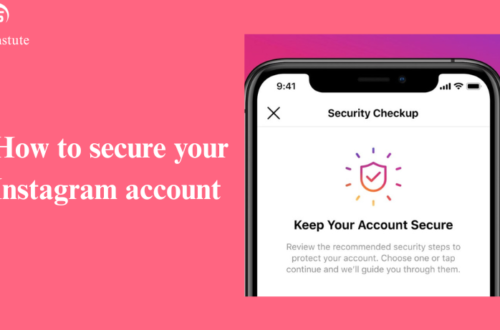Let’s face it smart homes are no longer just a sci-fi fantasy. From doorbells that greet you by name to fridges that reorder milk, IoT (Internet of Things) devices have cozied up into every corner of our lives. But while they’re busy making life easier, they’re also silently opening doors to potential cyber threats. That’s why how to secure your IoT devices at home is no longer just a tech geek’s concern, it’s everyone’s business. So, if you’re wondering how to keep your smart gadgets from turning into spy gear, buckle up. We’re diving into practical, no-nonsense ways to stay one step ahead of hackers.
Your First Move to Secure IoT Devices at Home
Before you go unplugging everything or building a digital fortress, know this it’s not about paranoia; it’s about preparedness. Here’s where you start:
- Change Default Passwords Immediately – Hackers love factory settings.
- Keep Software Updated – Those annoying updates? They’re your first line of defense.
- Segment Your Network – A guest network isn’t just for guests anymore.
- Disable Unused Features – If you don’t use it, lose it.
- Monitor Devices Regularly – Keep an eye out for any weird behavior.
First Steps Towards a Secure Platform in IoT
Ever heard the saying, “An ounce of prevention is worth a pound of cure?” Well, it could not be more true when talking about IoT security. the first step to secure platform The first steps to a secure platform in IoT begin with the right attitude and regular maintenance.
Begin with auditing your connected devices yes, do a complete inventory of your network endpoints. You‘d be amazed at how many intelligent devices discreetly creep into your home network without your awareness. Then, explore those privacy settings and firmware configurations. The manufacturers won’t necessarily make them conspicuous, but they exist, hidden away as treasure underground in the device management interface. And for goodness’ sake, don’t mindlessly click “Accept All“ on permission requests or app permissions those are popular attack vectors for breaching your IoT ecosystem!
How to Protect IoT Devices from Hackers
Hackers aren’t lurking in hoodies waiting to pounce on your smart speaker they’re more sophisticated than that. They exploit the weak links you’ve probably overlooked. So, how to protect IoT devices from hackers? Simple steps can go a long way:
Use Strong, Unique Passwords
We’re not talking about “password123.” Use a password manager and mix things up.
Enable Two-Factor Authentication
If your device supports it, use it. It’s like adding a deadbolt to your front door.
Encrypt Your Network
A VPN can mask your home IP and keep data transmissions out of sight.
Check Manufacturer Reputation
Before you buy that budget smart camera, ask yourself: “Would I trust this brand with my house keys?”
5 Tips to Secure Your IoT Devices from Hackers
Still wondering how to boost your defenses without going full-on James Bond? These five practical tips might be your new best friends:
- Set Up a Firewall – Create a barrier between your home and unwanted guests.
- Use Automatic Updates – Turn them on and forget about it until something goes wrong (which it won’t).
- Limit Device Access – If the dog doesn’t need Wi-Fi, don’t connect its food bowl.
- Review Permissions Often – Know which apps are watching and listening.
- Back Up Regularly – In case all else fails, have a plan B.
Securing IoT Systems Without Losing Your Mind
The key to securing IoT systems lies in consistency. It’s not a one-and-done deal. Think of it like brushing your teeth: skip a few days, and things start to rot.
Here’s a simple routine to stay on top of things:
- Monthly device audit
- Bi-weekly router check-up
- Quarterly software reviews
- Annual security setting overhaul
It may sound like a chore, but honestly, it’s less time-consuming than fixing a cyber-attack mess.
FAQs
Q: Are IoT devices really vulnerable to hacking?
Absolutely. Anything connected to the internet has potential entry points for hackers. Many IoT devices lack robust security measures, making them easy targets.
Q: Can my smart fridge really be hacked?
Surprisingly, yes. If it’s online, it can be a gateway. Even if it seems harmless, hackers could use it to access your home network.
Q: What’s the safest IoT device to buy?
Look for devices with regular firmware updates, transparent privacy policies, and good customer reviews. Brands that prioritize cybersecurity are your best bet.
Q: Should I disconnect devices when not in use?
If it’s something you rarely use, yes. Less connection equals fewer vulnerabilities.
Q: Do I really need a separate guest network?
Yes, and here’s why: it keeps your smart devices away from your personal data and adds a helpful layer of security.
Conclusion:
You have it: how to secure your IoT devices at home without going off the grid. With just a few smart moves, you can enjoy all the perks of a connected home without letting hackers crash the party. Remember, it’s not about being paranoid it’s about being prepared. In today’s digital jungle, a little caution goes a long way. So tighten up those passwords, set up that guest network, and choose what’s best for your home when it comes to smart security. Do that, and you’ll sleep a little easier tonight.






